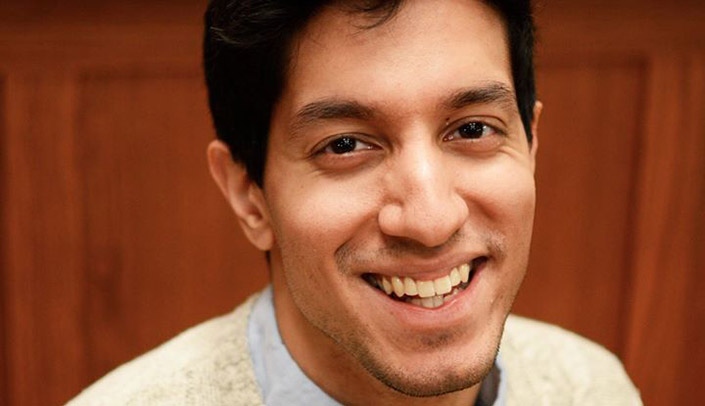As a first-year medical student, Rohan Khazanchi started learning about HIV. Since then, he’s worked with clinicians and staff at the UNMC HIV Clinic, volunteered at the Nebraska AIDS Project and met patients and community members who live with HIV.
Now, knowing there are differences by race in how patients do with their disease, Khazanchi, an MD/MPH student, set out to explore why. With mentorship from Jasmine Marcelin, MD, and Sara Bares, MD, from the UNMC Division of Infectious Diseases, and support from statistician Harlan Sayles and Susan Swindells, MBBS, he conducted a study as part of his thesis project for the Enhanced Medical Education Track in Comprehensive HIV Medicine.
Their findings recently were published in the journal Clinical Infectious Diseases. The study was a retrospective chart review study of about 950 patients seen at the UNMC HIV Clinic.
“Our study sought to understand the influence of structural forces, including neighborhood disadvantage, on the outcomes of people with HIV in Omaha,” Khazanchi said. “Omaha is among the most racially segregated cities in the country, which contributes to significant neighborhood-level differences in health and socioeconomic opportunity.
“The impact of redlining and neighborhood segregation on health outcomes is well-studied. Existing evidence has proven that racial segregation is a fundamental cause of racial health inequity. However, these upstream issues have not been directly linked to HIV outcomes in the U.S. Midwest,” he said.
Their analysis found that, at baseline, Black people with HIV had lower rates of viral suppression than white people.
“This was not an unexpected result and has been well-documented in local and national data. However, interestingly, the difference in viral suppression between Black and white populations was non-significant after we controlled for age, sex, income, neighborhood deprivation and rurality. This was primarily influenced by poverty and neighborhood deprivation, both of which were significantly and independently associated with lower odds of viral suppression,” Khazanchi said.
“Our findings demonstrate that race alone is not associated with worse HIV outcomes, but rather, racism in the form of intergenerational disinvestment in predominately Black communities is associated with downstream differences in neighborhood disadvantage and current HIV outcomes.
“If we, as a society, believe that everyone should have the opportunity to be healthy, then we need to create systematic supports to level this playing field. Our study reaffirms that sociopolitical risk conditions well outside of any individual’s choices play a critical role in impacting their health outcomes. Our results also highlight the need to ensure that the opportunity to achieve good health is fostered for all our neighbors, not just those who live in well-resourced communities.”
